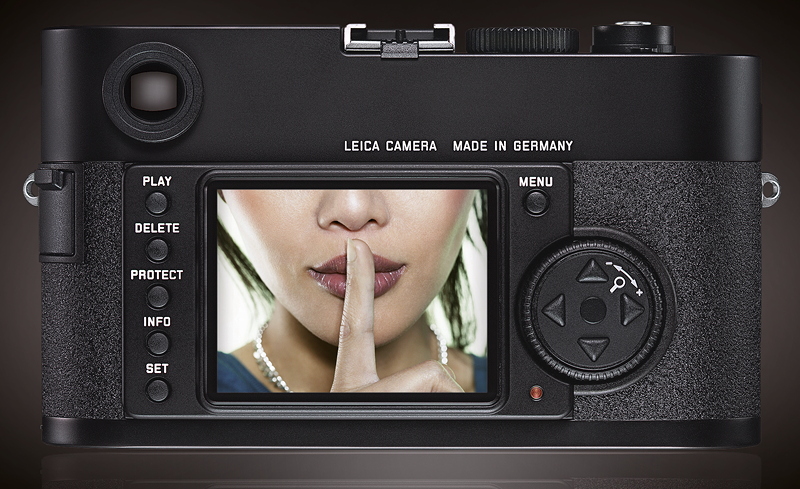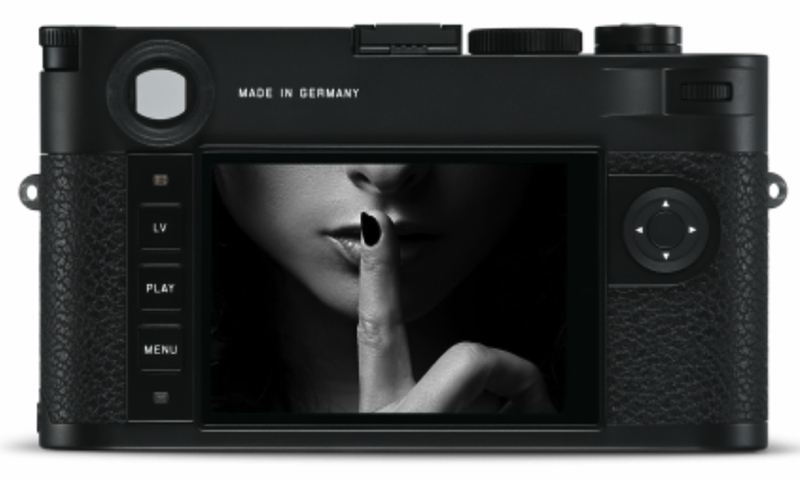24/08/18 12:35
Long ago, Zeiss designed new lenses for their flagship camera, Contarex. The lenses had a large volume and Zeiss explained that the size was needed to produce lenses with enhanced performance characteristics. The Contarex lenses still have this aura of “never-surpassed-quality”. Careful testing however shows that the lenses were very good, but not superior. Leitz in that same period focused on compact designs and their expertise was and is the combination of high quality with small footprint. There are limits for a small volume that cannot be surpassed unless one uses very sophisticated manufacturing techniques and extremely careful assembly (from the usual micro scale to the nano scale). This approach is not economical feasible (note the high price for the Apo-Summicron-M 2/50 mm ASPH) and Leica wisely did fall back on the old Zeiss design principle. The new range of lenses for the SL and CL/TL has a number of very large designs (absolutely and especially relatively). Zeiss showed the path to go with the Otus design and now Nikon, with its new Z-line follows suit: the Noct 1.2/58 mm has very large dimensions. The 1.8/50 mm has 12 elements in nine groups and has dimensions: diameter x length of 76 mm and 86.5 mm. The specs indicate that this is a 1.4 design that has been downgraded to improve performance. The number of lens elements is no longer a sign of high quality but an indication that the designer can delegate the correction of aberrations to a large number of elements to ease the load for every element and make production more economical.More lens elements are also a sign that the computer program is in automatic mode to control the tolerances for easy manufacture.
It may be the case that the new Z-mount does indeed free the designer from a number contents that the previous F-mount had. We wait and see.
Leica, once a company that produced workhorse cameras for discerning customers, has become a luxury manufacturer that leaves the main market to be a playing field for Sony and Nikon, and soon Canon.
The Nikon brochures and Nikon marketing will, naturally, stress the fact the the new Z-line will introduce the next stage of digital photography.
Leica copied and improved on the Sony mirrorless designs and Nikon studied very carefully both product lines and improved again. The technological progress is clear. It is also evident that Canon will improve again and the next generation of Sony, Nikon and also Leica will technically enhance their products. Wait for the announcement by Leica that the S-system will have a 50 to 100 Mp sensor. That will be the start of a new product cycle where the whole range of system cameras will get a 40 to 50 Mp sensor.
The technological race will continue for a while and then some manufacturer will realise that the average photographer who really wants to take pictures and does not want to be a techno-erotics freak is not served by ever increasing complexity.
Last but not least: the price of the Z7 with adapter and a 1.8/50 mm lens is in NL € 4528. Body only the Z7 is with adapter € 3849 and the Z6 plus adapter is € 2449 and with adapter and with1.8/50 mm it is € 3128. The Leica SL (body only) is € 5900 and the new M10-P has a price tag (body only) of € 7500 (the 2.4/50 mm and 2/50 mm lenses are € 1600, € 2200 and € 7400 respectively).
The best and critical comment about the media hype and the real position of the Z-line in the Nikon ecosystem can be found here (Only in German!)
https://www.foto-schuhmacher.de/artikel/hardware/der-migrationspfad-der-kamerahersteller-zu-spiegellosen-systemen.html#ndld
22/08/18 11:40

If you were to drop a droplet of water into the ocean, how much would the water level rise? By an infinitesimal small amount! The same impact has the introduction of the M10-P by Leica, Wetzlar. The improvements are minor and the price increase is only a pleasure for the CFO of the company.
I do not receive any cameras for inspection and testing (the management presumably thinks I am too critical and not enthusiastic enough). Well the point is that I am critical of the current strategy that is based on three pillars: (1) expansion into a broad portfolio (from cine lenses to spectacle glass and exclusive watches); (2)exploitation of the mythical past; (3) introduction of a range of cameras that are secondary compared to the products of the worldwide photographic industry.
There was a time (long ago) when the Leitz Company designed new cameras when the engineers thought that the new product could significantly enhance the quality of the photograph or assist in taking better pictures. That was the period when the whole photographic world would wait for the announcement of a new Leica camera.
When looking at the three additional features of the M10-P (the more silent shutter, the level gauge and the touchscreen), the basic question is: do these features help the photographer taking better pictures.
The answer is obviously negative. There are early comments that the silent shutter is good for street photographers. The reality is that the normal urban street isto full of noise and that the camera noise will not draw any attention. The touchscreen requires that the photographer to hold the camera in one hand and uses the other hand to pinch and swipe over the screen. This is hardly the condition that HC-B called the extension of the eye. The classical handling of the camera requires a triangle of two arms and the forehead to stabilise the camera and to focus on the subject. The functions of the touchscreen may be helpful for post-photography inspection, but not for the act of photography itself.
The gauge level is good for studio and architectural photography. These are hardly the domains where the M camera excels. And what about the famous skew horizons of Garry Winogrand?
The M10-P is a camera type that the world is not waiting for, but it might excite the occasional Leica guru.
Remember!
Below a marketing picture of the M8 and silent shutter

Below the almost identical picture for the M10-P and silent shutter

03/08/18 12:49
In a recent video, the director of operations, Mr. Stankovic, explains how cameras are assembled in the current workflow in the Wetzlar buildings. To give you some context, the classical way of manufacturing, serial numbers allocation and assembly may be elucidated.
When Leica had only two camera systems (the R- and M-line) with a range of lenses, the workflow was like this: the product manager decided how many cameras and lenses were to be made, based on demand and sales forecasts. Then for every camera and lens a batch of serial numbers was reserved and the production of such a batch started. The production of every batch required time, because the batches were made in succession. This had the consequence that some products were temporarily unavailable or (worse!) did not sell at all and were in stock for a long time. This method was transparent, but had the danger that capital was destroyed. The manufacturing method was a version of the very old assembly line: a line of workstations was established and on every workstation one person assembled some parts of the product.
The agility concept implies that the production responds very quickly, if not immediately to market movements. A new product requires a fast production run to have enough items available, but the demand of existing products also needs to be satisfied. Therefore the new method is to have a number of assembly stations where one person assemblies up to ten different products (presumably in a period between a day and a week). This method explains a few things: serial numbers are now almost allocated at random, the product quality is less than what it was. Classical cameras (like the M-A) are organically assembled from a number of parts. That is why one person on one workstation assembles one camera at a time. This can be done because demand is low.
Modern digital cameras are assembled with subgroups (like shutter mechanism and electronic boards) and every assembly stage is controlled by computer. This makes it easier to assemble a variety of products in a short period. For lenses the same method is implemented.
The advantages are clear: hardly any obsolete stock and a fast reaction to changing demands. The disadvantage? Think for yourself!
01/08/18 11:39
1. apply snapshot style to your personal photography
2. select everyday moments and things you are emotionally attached to
3. avoid cliché photographs, including picturesque scenery
4. avoid simulation of art photographs, also cliché!
5. do not take photographs of conventional things and events
6. be creative in the sense of spontaneity and instantaneity
7. use film
8. do not believe that digital is better
9. apply the detective approach
10. accept that the cameras sees different things than common causal perception and presents them differently
11. forget about photographic language, photographic seeing, photographic message and all this stuff
12. avoid street photography and the snapshot-aesthetic approach
13. straight photography or deadpan photography and Leica photography are a happy symbiosis
14. read Robert Penn “It’s all about the bike” if you wish to understand photography
15. everyone (including Leica marketing and Leica development) claims that the path from analog to digital has a teleological necessity: progress implies that old technologies are obsolete and restrictive
16. this is false: digitization of the camera simply increases profit.
17. if you insist on walking the digital path, use the Leica M8 or M10, or both
18. my preferred tools?
19. Most used: Leica M-A, Leica M7, Apo-Summicron-M 2/50, Sekonic L-398A III, Ilford Delta 100, Kodak TMax 100, ADOX FX-39
20. Occasionally used: M8, M Monochrome II, Iridient Developer, Epson R-3000




